The Changing Faces of Fear in Australian Literature
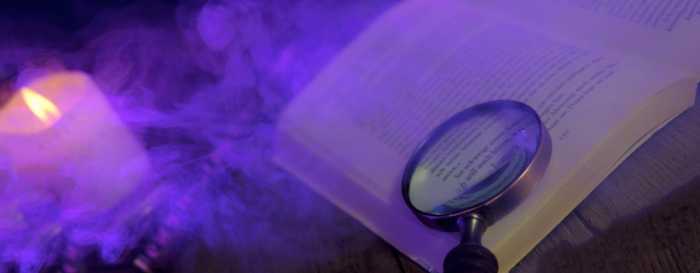
This article analyses how the theme of fear has changed in Australian Literature over time. The Australian settlers responsible for our early gothic fictions gave external form to their internal fears through their descriptions of the landscape as eerie, dangerous and monstrous. While some contemporary works, such as Craig Silvey’s Jasper Jones, revisit the nation’s classic literary themes of racism and “who belongs?”, others, such as Liane Moriarty’s Truly Madly Guilty, fall into the emerging trend of domestic suburban thrillers. Both these works will be analysed through a psychoanalytic, post-colonial and feminist lens to determine how contemporary fiction has changed the face of fear.
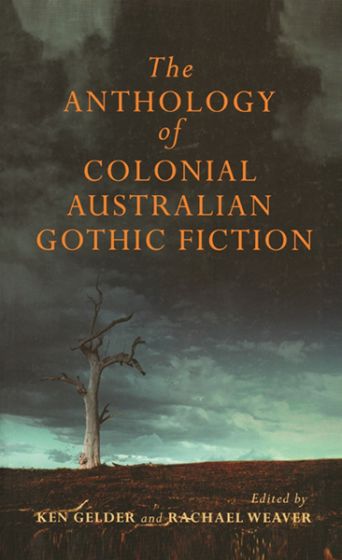
Fear has played a major role in the history of Australian literature in response to the establishment of British colonies and what that meant to Aboriginal culture and way of life; beginning with the gothic tales published in the late nineteenth century. The colonial writers of these early Australian novels wove unnerving tales about the anxiety of not belonging in a foreign land. At the same time, the unknown landscape also inspired their fearful descriptions. In The Anthology of Colonial Australian Gothic Fiction, author Marcus Clarke provides a ghostly description of the Australian landscape.
The Australian mountain forests are funeral, secret, scorn. Their solitude is desolation. They seem to stifle, in their black gorges, a story of sullen despair . . . In the Australian forests no leaves fall. The savage winds shout among the rock clefts. From the melancholy gums scrips of white bark hang and rustle. The very animal life of these frowning hills is either grotesque or ghostly. Great grey kangaroos hop noiselessly over the coarse grass. Flights of white cockatoos stream out, shrieking like evil souls. The sun suddenly sinks, and the mopokes bursts out into horrible peals of semi-human laughter. The natives aver that, when night comes, from out the bottomless depth of some lagoon the Bunyip rises, and, in form like monstrous sea calf, drags his loathsome length from out the ooze. From a corner of the silent forest rises a dismal chant, and around a fire dance natives painted like skeletons. All is fear-inspiring and gloomy. 1
Gerry Turcolte, lecturer at the University of Wollongong, provides further insight into the Gothic narratives place in the history of Australian literature.
Long before the fact of Australia was ever confirmed by explorers and cartographers it had already been imagined as a grotesque space, a land peopled by monsters. The idea of its existence was disputed, was even heretical for a time, and with the advent of the transportation of convicts its darkness seemed confirmed. The Antipodes was a world of reversals, the dark subconscious of Britain. It was, for all intents and purposes, Gothic par excellence, the dungeon of the world. It is perhaps for this reason that the Gothic as a mode has been a consistent presence in Australia since European settlement. 2
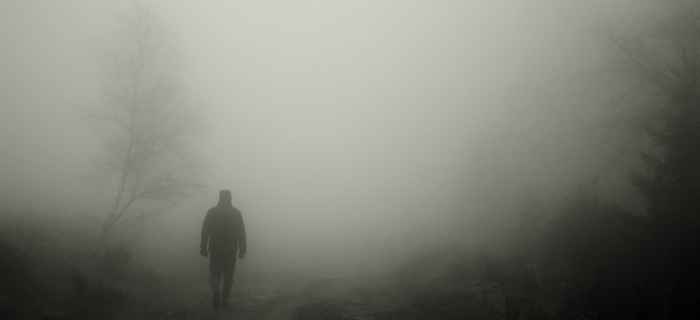
Literary monsters are timely as they embody social and cultural present-day fears. Before the White Australia Policy was dismantled, books such as Charles Chauvel’s Uncivilised were popular. The story is a fairy tale about an indigenous tribe making a lost white child its leader and includes what would later become the archetype of the “evil witch doctor” 3, a reference that also appears in Bingham and other Golden Boomerang books. This continued into adult novels such as Ion Idriess’ Lasseter’s Last Ride which featured a black witch doctor:
With skinny claw the witch-doctor pulled out a dried lizard . . . His lips moved sibilantly and Lasseter could have sworn that the lizard hissed in reply . . . Over each article he pored . . . as if it possessed some power of evil. 4
Shared global fears in the twenty-first century, at least for Western countries, largely concern terrorist attacks. This is reflected in Janette Turner’s Hospital, A.L. McCann’s Subtopia and Linda Jaivin’s The Infernal Optimist; three narratives about the destructive nature of terrorist and their desire to wreak havoc. 5
Post-colonial Fear
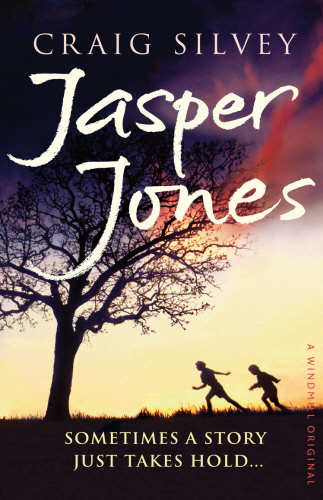
The self/white heteromasculinity and two subtly different types of Other, Indigenous people and ethnic groups (those who are understood as offering a threat of social, political or military invasion). Other authors are more concerned with the horrific actions carried out by members of our own community, such is the premise of Craig Silvey’s novel, Jasper Jones. Fear maintains an active presence in the work following the opening catalyst: the grisly discovery of a young girl’s body, hung from a tree by a local watering hole. Though this incident is frightening enough, the sensation of fear continues well beyond this scene. The protagonist, Charlie Bucktin, is consumed by fear. Some of Charlie’s worries are spurred from actual experiences, others are the conjuring of his own mind. He is instantly suspicious when Jasper Jones knocks on his window that fateful night and enters his life. Later, Charlie is terrified of the idea of Jasper leaving town and abandoning him. After disposing of the young girl’s body, Charlie is afraid of getting caught, of not getting caught; afraid that there is a murderer in his town, and that maybe that person is Jasper. And to top it all off, he has an irrational fear of bugs.
Racism, prejudice and the underlining fear of the Other are explored through the outsider characters of Jasper and Jeffery. Jasper is the child of a white father and an aboriginal mother. Jasper experiences an unstable childhood following the death of his mother. His rebellious, alluring and aloof personality quickly establish him as a convenient scapegoat and he is blamed for every unseemly activity that occurs in the town. It is because of this prejudice that Jasper compels Charlie to dispose of Laura’s body. Jasper is convinced that if they don’t, then he will be arrested for Laura’s murder; a reasonable conclusion given that the victim is a white teenage girl (believed to be a virgin) from one of the town’s wealthiest families. Similarly, Jeffery Lu and his Vietnamese family are the continuous victims of racial prejudice as many of the local residences have sent their sons off to fight in the Vietnam War. Charlie witnesses the town’s prejudice first hand during a town meeting. Following the announcement that the police have no new leads on Laura’s disappearance, Charlie notices the gossip and speculations around the potential culprit.
Then someone mentioned Jasper Jones. The same way they did when the post office burned to the ground. With titled eyebrows and suspicion. … And I understood then that maybe we really did do the wrong thing for the right reasons. 6

Before Charlie turns to leave the hall, he hears Jeffery’s mother, Mrs. Lu, cry out. After filling her teacup up from the communal urn, a woman named Sue Findlay, slaps the cup from Mrs. Lu’s hand, scalding her badly, and precedes to jab the air and recite racist remarks. It isn’t until Sue reaches out to pull on Mrs. Lu’s hair that the town Reverend intervenes.
This racial tension continues throughout the novel. At one point, Jasper is arrested – without evidence – beaten up by the town sergeant, locked up for a weekend and enticed to confess to Laura’s murder. It is during this illegal detaining that Jasper meets Laura’s father, who also beats him, and discovers that Pete is the president of the shire. Here, Silvey illustrates that racism was not only common in Australia in the 1960s, but celebrated. As the narrative continues, the Lu family continue to experience violent attacks and abuse. Jeffery is mocked by his schoolmates, and Mr. Lu is brutally beaten on his front lawn after a town father discovers that his son has died in action while fighting in Vietnam.
Fear and racism have remained popular themes in Australian literature because of our settler history and our present-day multiculturalism and social egalitarianism. As Cornel West argues in the case of America, “To engage in a serious discussion of race…we must begin not with the problems of black people but with the flaws of American society — flaws rooted in historic in equalities and longstanding cultural stereotypes” 7. Graham Huggan states that Australia, like America, also suffers from this same “violence and ideological extremism” 8. Racism is fear; fear of the other. It could be argued that the racism that exists within Australia, and that is reflected within its literature, may not be the result of the nation itself but the product of far reaching roots that go beyond the nation’s history and borders. The root behind the racism within Australian literature boils down to one question, “who has the right to belong?” 9
Feminism and Fear
Until we reach a political, social and cultural utopia, themes regarding racism and “who belongs” will continue to dominate contemporary Australian fiction. In alignment with Poe’s earlier sentiments about fear being a luxury in a time of comfort, the new subgenre of the domestic/suburban thriller has emerged. Fear is no longer generated through external evils that exist outside the home: monsters, supernatural entities or psychopaths. Instead, publishers and readers are interested in experiencing sophisticated, modern, and internalised fear by exposing the evil that exists in our homes, our spouses and ourselves. Evening Standard Journalist Rosamun Urwin describes this new genre as chick lit with “no happy ending, no wedding dress or pram, just plot twists and tortured souls. These are thrillers thrown into the domestic sphere, tales of intimate betrayal and mistrust” 10. International best-sellers Gone Girl (Gillian Flynn, USA) and How To Be A Good Wife (Emma Chapman, UK) have helped craft this new sub-genre and Australian author Liane Moriarty’s suburban thriller, The Husband’s Secret, hit number one on the New York Times, and her novel, Big Little Lies, has been turned into a US television drama. Truly Madly Guilty is Moriarty most recent work, hitting number one on the Australian bestseller list while her two-previous works were still in the top ten.
The target audience of these novels is straight, married women. What makes these books marketable and profitable is their ability to tap into the audiences’ collective fear that men are a threat to women’s safety. Though men are more likely to be the victim of a violent crime than women, women assume that they are more vulnerable to attacks than men. Criminologists dub this the fear-victimization paradox 11. The belief that women are more vulnerable to sexual attack than men assists in the divide between the public sphere and the private. The private sphere, physical structures built by men, are safe. The public sphere, which is dominated by men, is unsafe. The perceived threat of inescapable attack when entering the public sphere keeps women fearful, and therefore, easier to control. Women are not doomed to become victims and not all men are violent, but by manipulating the knowledge that some women have become victims, then women are collectively easier to control and suppress.

Suburban thrillers take advantage of this basic fear by having female characters experience multiple forms of domestic violence or abuse. In the case of Lianne Moriarty’s work, Truly Madly Guilty, all the female leads are the victims of their male counterparts. Erika becomes a foster parent because her husband Oliver wants to be a father (though she doesn’t want to be a mother), Clementine is blamed by her husband Sam for the near death of their child (though both parents were present at the time of the accident) and Tiffany is encouraged by her husband Vid to strip during a neighbourly barbeque (despite her reservations to do so). Moriarty plays directly into her audience’s basic fear of men taking control of women.
Although Jasper Jones is set in the 1960s, the suppression experiences by its female character remain uncomfortably relatable. Initially, Jasper idolises Eliza through his comparison to her and Audrey Hepburn; both are prim, proper and perfect. A simplification that causes him to underestimate her. As the truth behind Laura’s death is revealed, Jasper learns of the tragic circumstances that lead to her demise. Both Wishart sisters were abused by their father, a wealthy and prominent man in the community. Pete Wishart, a closet alcoholic, sexually and physically abused his oldest daughter Laura, and physically abused his youngest Eliza. In an effort to save Eliza from their father, Laura submits to his abuse. Eventually, Laura decides to commit suicide, seeing no other means of escaping her powerful father. Eliza eventually gets her revenge, by setting a fire in her home and injuring her father. Similarly, Charlie’s mother Ruth feels suppressed by the circumstance of her own life. Now middle-aged, she feels that both her youth and dreams have withered as she raised her son in the small town of Corrigan, isolated from her own family in the city. Her outlook is further embittered through her passionless marriage to Charlie’s father, Wesley; a relationship that is not improved by Wesley’s decision to disappear into his study every night after dinner. In the end, Ruth is only able to liberate herself by abandoning Charlie and Wesley, knowing that her husband would never be willing to sacrifice his comfort and preference for small town living in order to follow her into a new life in the city.
Literary Devices and Supporting Themes
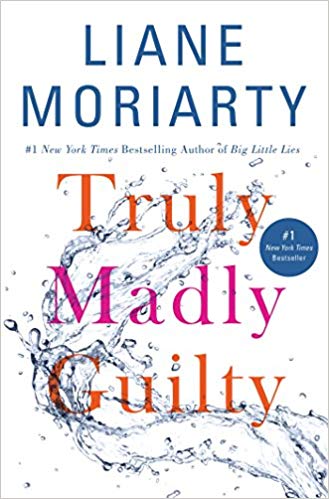
If a novel is truly terrifying – or at least unsettling – why do readers continue to read? Some may argue that a likeable character is enough to keep readers’ attention, but award-winning author Patrick deWitt disagrees: “Some of my favourite books have despicable protagonists but I find them fascinating […] I hope some [readers] might be willing to push a bit deeper and look to spend time with characters who aren’t entirely likeable” 12. In alignment with deWitt’s statement, Moriarty’s Truly Madly Guilty focuses on three largely unlikeable couples, their children and one rude neighbour. Though unlikeable, Moriarty has made the characters interesting through their dynamic interactions with one another, complex personal and interpersonal histories and through her withholding of information. Given the sizeable cast, Moriarty initially allows her characters to fall into stereotypical roles, making it easier for the reader to differentiate them. First, there is the outrageous and wealthy couple Vid and Tiffany, OCD control freak and germophobes Oliver and Erika and the artsy new-age parents Clementine and Sam. As the book progresses the characters deepen and change and justification for certain behaviours are revealed. For instance, Erika and Oliver’s controlled demeanour is the result of their respective parents’ mental illnesses. Previously endearing characteristics, such as Sam and Clementine’s playful marriage are later revealed as a forced re-enactment of how ‘happy families’ behave in the movies. In reality, their marriage has become sexless and is on the verge of collapse. However, despite each character’s flawed nature, they are capable of selfless acts. For example; Erika accepts Vid’s invitation to the barbeque, even though she doesn’t want to go, and Clementine agrees to donate her eggs to Erika for IVF treatments, even though she finds the idea repulsive. Readers are willing to invest in these characters because they can relate to the (admittedly bloated) suburban problems.

In order to convince a reader to stay with a novel that explores fearful themes, one needs more than a cast of interesting characters. The use of literary devices such as voice, POV and pacing double as tools to engage readers, heighten tension and build fear. Truly Madly Guilty uses a rotating, past tense, third person limited POV, while Jasper Jones uses first person, present tense. While Moriarty maintains a consistent tone throughout, the voice within each chapter changes to reflect that POV character’s unique perspective. Though the horrifying events of the barbeque are not revealed until halfway through Truly Madly Guilty, Moriarty successful keeps her readers hooked by making them care about her complex characters and by delicately insinuating the reasons behind particular behaviours and conversations. Despite the close third person POV, Moriarty subtly alludes to deep seeded secrets and regrets while holding back on the details. Though she shows that the characters’ feel appalled by the behaviour of their shadow selves, she conceals the particularities of their situation until the end of the novel.
Fear is maximised in Truly Madly Guilty through the manipulation of its pace. As the timeline, sequence of events, or character motivations become clear, Moriarty peels back another layer to reveal a new unexpected truth: Erika is a kleptomaniac, having stolen items from Clementine’s home for years and storing them in a concealed chest in her bedroom cupboard. The book moves quickly throughout, despite the fact that the traumatising event hinted at in chapter one is not revealed until page 291. Moriarty leads us to this pivotal moment with five short sharp chapters, increasing the pace and instilling a sense of fear: something is coming. A red herring appears, but when the much-foreshadowed event is revealed the plot twists again.
One of the book’s central mysteries is Erika’s memory loss. Fear is propelled through these gaps as other characters step in to reveal what they witnessed on the night of the barbeque. So much information is brought forth that the reader is led to believe that they have the full picture. It is only when Erika regains her memory within the last ten pages that the plot twists one final time. Truly Madly Guilty generates terror in its readers through its characters exploration of their shadow selves, but also through Moriarty’s withholding of information, consistent allusion to character secrets, and the tension created by the combination of these two elements.
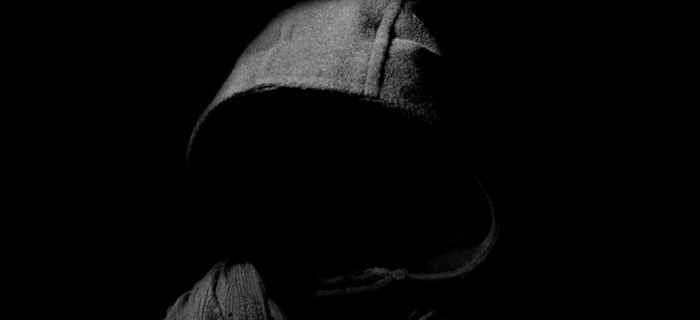
The subject matter and style of Jasper Jones is very different from Truly Madly Guilty, yet it uses similar techniques. Employing a mystery novel structure, Silvey carefully exposes the truth behind Laura’s death while simultaneous unravelling the complicated and rich subplots of 1960s racism, marital discord (domestic servitude), first loves, sexual abuse and child abuse. The question of Laura’s death is what drives the narrative, however, it is the compounding emotional terror of the subplots that keeps readers engaged. Readers identify, or at least empathise, with Ruth’s domestic suffocation, Jeffery’s alienation, Jasper’s abandonment and the abuses suffered by the Wishart sisters. Though the emotional tenor is what keeps readers engaged, Silvey also employs classic mystery novel techniques like red herrings – did Jasper kill Laura, did she kill herself, did Mad Jack Lionel do it? – and the gradual exposure of secondary characters’ motivations and backstories to keep the central plot moving forward.
Jasper Jones combines horrific events both real and rumoured. Mad Jack Lionel, as the name suggests, is cast as the town’s mad man supposedly responsible for the murder of a young girl, her car slowly rusting away in Jack’s backyard. Fear is struck into the hearts of Corrigan’s youth as teenagers dare each other to dash across Jack’s property to steal a peach from the tree in the backyard. Even when Charlie learns that Mad Jack Lionel isn’t mad, that the rusting car in the backyard belonged to Jasper’s deceased mother and that Jack is, in fact, Jasper’s Grandfather, he stills feels uncertain after accepting Warwick Trent’s dare.
I’m so far inside [the yard] that I can’t hear them, or even feel their presence anymore. And even though I know I’m under no threat, it’s still an eerie and intimidating pilgrimage. I start to tread lighter as I get closer … I wonder if he’s watching me … I breathe deep. 13
Then there are the real horrors: Mr. Wishart’s repeated assaults on his daughters, a town blaming a teenage boy for all its mischievous activities and the brutal hate crime against the Lu family. Through the manipulation of pace and careful control of information Silvey is able to turn commonplace events into terrifying experiences. Both Jasper Jones and Truly Madly Guilty start with enticing, violent incidents: the death of a young girl and the near drowning of a small child. However, these events are not the plot, but a mere catalyst to get the ball rolling. The true plot is the snowballing effect generated from the terrifying incident and how that crime has caused some characters to expose their shadow selves or become aware of the shadow selves in their families, friends and perceived enemies. Following Laura’s death, Charlie’s eyes are opened to the racism that exists in his small town of Corrigan and the abuse the women in his life have suffered. Following the near drowning of a child, Erika’s kleptomania is revealed, Clementine confesses that she is only friends with Erika out of obligation, Oliver’s need for control increases, Sam and Clementine’s marriage grows colder and the neighbour who warns Erika of the near drowning, Harry, immediately falls down the stairs and dies.
While Jasper Jones is a contemporary take on the classic Australian tropes of racism and belonging, Truly Madly Guilty falls neatly into the trendy category of domestic suburban thrillers. And yet, both give form to fear not as an external Other but in the shape of neighbours, family, friends and ourselves. While early horror novels gave form to fears – social and cultural – by way of supernatural creatures and monsters, contemporary literature leans towards a more sophisticated representation. Now, terror is explored through the exposure of a character’s shadow self. Now, we are the monster.
Works Cited
- Gelder, K and Weaver, R (2007), ‘The Anthology of Colonial Australian Gothic Fiction’, Melbourne University Print, Melbourne. ↩
- Turcotte, G (1998) ‘Australian Gothic’, in Mary Mulvey-Roberts (ed.) The Handbook to Gothic Literature, pp. 10-19, Basingstoke: Pan Macmillan. ↩
- Breyley, G (2009), ‘Fearing the Protector, fearing the protected: Indigenous and “National” fears in Twentieth-century Australia’, vol. 23, issue 1, available from: http://search.proquest.com.ezproxy.usc.edu.au:2048/docview/211256754?rfr_id=info%3Axri%2Fsid%3Aprimo ↩
- Breyley, G (2009), ‘Fearing the Protector, fearing the protected: Indigenous and “National” fears in Twentieth-century Australia’, vol. 23, issue 1, available from: http://search.proquest.com.ezproxy.usc.edu.au:2048/docview/211256754?rfr_id=info%3Axri%2Fsid%3Aprimo ↩
- Carr, R (2016), ‘A world of…Risk, Passion, Intensity, and Tragedy’: The Post-9/11 Australian Novel’, Antipodes, vol. 23, no. 1, pp. 63-66, available from: http://search.proquest.com.ezproxy.usc.edu.au:2048/docview/211240066?OpenUrlRefId=info:xri/sid:primo&accountid=28745. ↩
- Silvey, C (2009), ‘Jasper Jones’, Allen and Unwin, Sydney. ↩
- Huggan, G (2017), ‘Australian Literature: Postcolonialism, Racism, Transnationalism’, Oxford University Press, Oxford, available from: https://ebookcentral-proquest-com.ezproxy.usq.edu.au/lib/usq/reader.action?docID=415105&query= ↩
- Huggan, G (2017), ‘Australian Literature: Postcolonialism, Racism, Transnationalism’, Oxford University Press, Oxford, available from: https://ebookcentral-proquest-com.ezproxy.usq.edu.au/lib/usq/reader.action?docID=415105&query= ↩
- Huggan, G (2017), ‘Australian Literature: Postcolonialism, Racism, Transnationalism’, Oxford University Press, Oxford, available from: https://ebookcentral-proquest-com.ezproxy.usq.edu.au/lib/usq/reader.action?docID=415105&query= ↩
- Whitehouse, L (2014), ‘Rise of the marriage thriller’, The Guardian, available from: https://www.theguardian.com/books/booksblog/2014/jan/15/rise-marriage-thriller-couples-secrets-gillian-flynn ↩
- Yodanic, C (2004) ‘Gender Inequality, Violence Against Women, and Fear: A Cross-National Test of the Feminist Theory of Violence Against Women, Journal of Interpersonal Violence’, Sage Publications, no. 19, vol.6, pp. 655-675, available from: http://journals.sagepub.com.ezproxy.usq.edu.au/doi/pdf/10.1177/0886260504263868 ↩
- Bethune, B (2015) ‘The Interview’, Business Source Ultimate, issue. 128 pp. 23, available from: https://usq.summon.serialssolutions.com/2.0.0/link?t=1527742826133 ↩
- Silvey, C (2009), ‘Jasper Jones’, Allen and Unwin, Sydney. ↩
What do you think? Leave a comment.











Very satisfying article. Some of these literature pieces can be a little bit unsettling at times but also touching.
Craig Silvey is an amazingly descriptive writer. Really effective in dealing with prejudice in Australia.
Brilliant. A powerful and thought-provoking article that I did not know I needed to read. Sharing it with friends and family.
Hi!
I’m so glad you liked the post. I wonder, would you be comfortable with me using an adapted version of this comment as a testimonial on my site and as part of an advertising campaign on Instagram? (Not a paid “campaign” just as part of a normal Instagram post on my page to promote this blog and my newsletter in general). In both cases, I’d be happy to link back to your website or social media pages if you’d like me too.
Tara
Great, a thought-provoking article
This is a wonderfully well-written piece! I love your topic, and how thorough you are with your supporting research. The fact you include feminism and the fear-victimization paradox really supports your thesis well. Overall, it’s a very enjoyable read!
Hi!
I’m so glad you liked the post. I wonder, would you be comfortable with me using an adapted version of this comment as a testimonial on my site and as part of an advertising campaign on Instagram? (Not a paid “campaign” just as part of a normal Instagram post on my page to promote this blog and my newsletter in general). In both cases, I’d be happy to link back to your website or social page IF you’d like me to.
I’d edited the comment to, “This is a wonderfully well-written piece! I love your topic, and how thorough you are with your supporting research.”
Oh yes, please feel free to use it however you’d like to promote your writing! That sounds wonderful. I don’t have a website or anything; you can link back to my profile here on the Artifice if you want to, but you don’t have to. Good luck!
Oh, fantastic! Thank you so much, I truly appreciate it!
You’re welcome, I wish you all the best! =)
I think we, as Australians, are so desperate for the next Winton or Carey that we will applaud anything that comes out.
Ha! I wonder what happened to the cultural cringe?
I first bought Jasper Jones in February 2013, when I was back in Australia and wanted to grab a few titles I couldn’t, at the time, get in Canada. It’s sad that it’s taken me nearly 6 years to get around to start reading it, especially considering how enjoyable it is. Thanks for making that happen.
I have a particular fondness for coming of age novels and this was a great one.
I really didn’t like this book. I had huge problems with the narrator, the writing style and the plot. Not to mention how this novel is billed as the Australian To Kill a Mockingbird.
Imagine my surprise when reading a book by Australian author and coming across words like: ‘roasted pig, Slovenian way’, ‘strudel’ and ‘cremeschnitte’. Why? Because I’m Slovenian.
Interesting on how the Gothic genre works within the Australian landscape. I was surprised by the treatment used towards indigenous Australians.
Great alternative to the usual Historical Australian stories of pioneers conquering the land.
Jasper Jones is like Twin Peaks transplanted to 60s Australia. You know, if Lynch decided to tell a story in a straight line for once…
Lovely read. I attended the Printz Awards where I saw Craig Silvey speak. The next day, on a plane for home, there he was! We hollered out his name, apparently startling the poor Aussie who had not really adjusted to stardom or noisy librarians.
After the flight, there he was in baggage claim. So, I sidled up to him, made some small talk and then found he was traveling a bit since he was in the US for the first time. Along with my other noisy librarian friend, we learned that he was lacking basic information about Bay Area transportation.
“Take a cab across the Bay Bridge at this hour!?! How much money and time do you have?” So, we offered him a ride to BART (Bay Area Rapid Transit… not some guy named Bart which was his initial assumption). He was lovely, funny, charming, sweet, gracious, etc. So I read his book. And I was really impressed with it.
The book is amazing. It made me laugh and cry and think and rage. I would hope to meet the author one day. Congrats.
That’s a cool story! Never have I read a book that chilled me to the bone and made me laugh all in the same chapter.
I feel like I can always rely on a Moriarty book to make 500 pages feel like 50!
This awesome blog is really awesome and informative. I have chosen a lot of handy advices out of this amazing blog. I ad love to go back again and again. Thanks!
I’m a big fan of Liane Moriarty but I found that novel to be a little too slow for my liking, I’m glad that I stuck with it as there’s plenty of surprises towards the end of the book.
A great resource. Thanks for the article.
Jasper Jones is so dark, so very dark, and yet… enjoyable. Silvey’s careful use of language brought this book to life for me. I found the characters’ motivations frustrating throughout most of the book, but that was his intention.
My main problem with the book is that there is no development to the plot for the majority of the book. The plot is literally introduced in the first chapter and then that’s it for the entire book until the 3rd to last chapte and really if you’ve read tkam then you know this entire book. No joke you know the story and every single character revelation. It was painful to get through cause it was so boring.
Liane Moriarty is a guilty pleasure of mine. I read a lot of dark books so I read her stuff to kind of get a break in between. I’ve read nearly almost all of her books and it always follows the same formula.
Love LOVE this author!
Awesome read.
Jasper Jones is one of the most sympathetic characters I’ve come across in a while.
This is an excellent article. It succinctly points out how much Australia’s racism is very much like the racism here in the United States, and other Western Societies. Cornel West is correct when he points out that it’s not the problems of people, but the flaws of American Society that need to be looked at before even beginning discussions on the issue of race and racism.
Great read!
Amazing!
I found this article well-researched, interesting to read, and for my the opinions are valid and well justified.
I have only one quibble. I wouldn’t describe the theme of racism in Australian literature as ‘popular.’
Rather, the books that write honestly on the themes of racism attract a thinking audience which is anti-racist and accepts the necessity of thinking honestly and responsibly about the issue.
If one thinks back to David Marr’s ‘The White Queen,’ https://www.quarterlyessay.com.au/essay/2017/03/the-white-queen,
his demographic research found that 15% of Australians openly admit to racist views.
This one-sixth of the population is enough to do serious damage.
But this cohort is not the readership of narratives which offer a critical view of the suffering induced by racism. The other 85% of Australians are those who see racism as an attitude of ignorance which needs education to bring it to an end.
I, for one, hope we will see that change arrive, the sooner the better if the writers of honest stories have an influence.
The authors’ work cited at the beginning of this article are right when they say the land is ghostly, however I get a different impression from the Australian bush. I think it’s beautiful, even though the climate is harsh. I get the feeling that the same way Markus Clarke felt repulsed by something unfamiliar can also be turned back on him, because he is the unfamiliar invader. Colonialism has a way of criticising the very land (and the people in it) that they wish to own and control. If he thinks the ‘natives painted like skeletons’ are spooky, imagine how they felt when the colonists ate all their food and stole their children. I didn’t like that passage because it seemed like an intentionally negative description. By making the land abject, the author (Markus Clarke) can situate himself outside of that, therefore he is not ‘grotesque’, ‘horrible’, or ‘monstrous’, and this makes him and the other colonists superior
Interesting take on fear and the gothic in Oz. I hadn’t really thought of it in that way but yes, the landscape as threat is a huge theme in Australian literature. Patrick White novels, Wake in Fright, Bereft by Chris Womersley, a number of children’s stories. Jasper Jones was a great novel, with its many layers of tension: race, class, colonisation etc. even non-fiction like The Arsonist, which tells of the power of fire and our relationship to the urban fringe/the bush. Thanks for a good piece!
Wow. Sometimes you don’t know you need to read something until you do.
Hi!
I’m so glad you liked the post. I wonder, would you be comfortable with me using an adapted version of this comment as a testimonial on my site and as part of an advertising campaign on Instagram? (Not a paid “campaign” just as part of a normal Instagram post on my page to promote this blog and my newsletter in general). In both cases, I’d be happy to link back to your website or social media pages if you’d like me to.
This article is brilliant! I enjoyed a lot understanding powerful messages behind of this article.
I loved your article, especially as I am currently teaching a unit on Australian Gothic literature. Sadly, it doesn’t include the brilliant ‘Jasper Jones’; however, Matt Cameron’s play, ‘Ruby Moon’, provides a confronting and provocative study of fear in a suburban culdesac. As you observe, the real horror lies not in some ‘external Other’, but in ourselves – ‘we are the monster’. Many thanks.
This is a brilliant article, beautifully written!
Beautifully written piece. I studied Jasper Jones a few years ago in Year 10 English, and found the themes and perspectives incredibly thought-provoking. Your analysis is incredibly well done, and the wonderful depth of your research clear.
I wonder how Silvey’s new release would hold up to this analysis. I ask because there is also a variety of recent Australian works that draw positively on the notion of the ‘other’. Tara June Winch’s recent book ‘The Yield’ immediately comes to mind, as do various novels of Peter Carey. Australian Gothic is always a fascinating notion, but I wonder if its themes are beginning to become a little out of step with Australian culture more broadly?